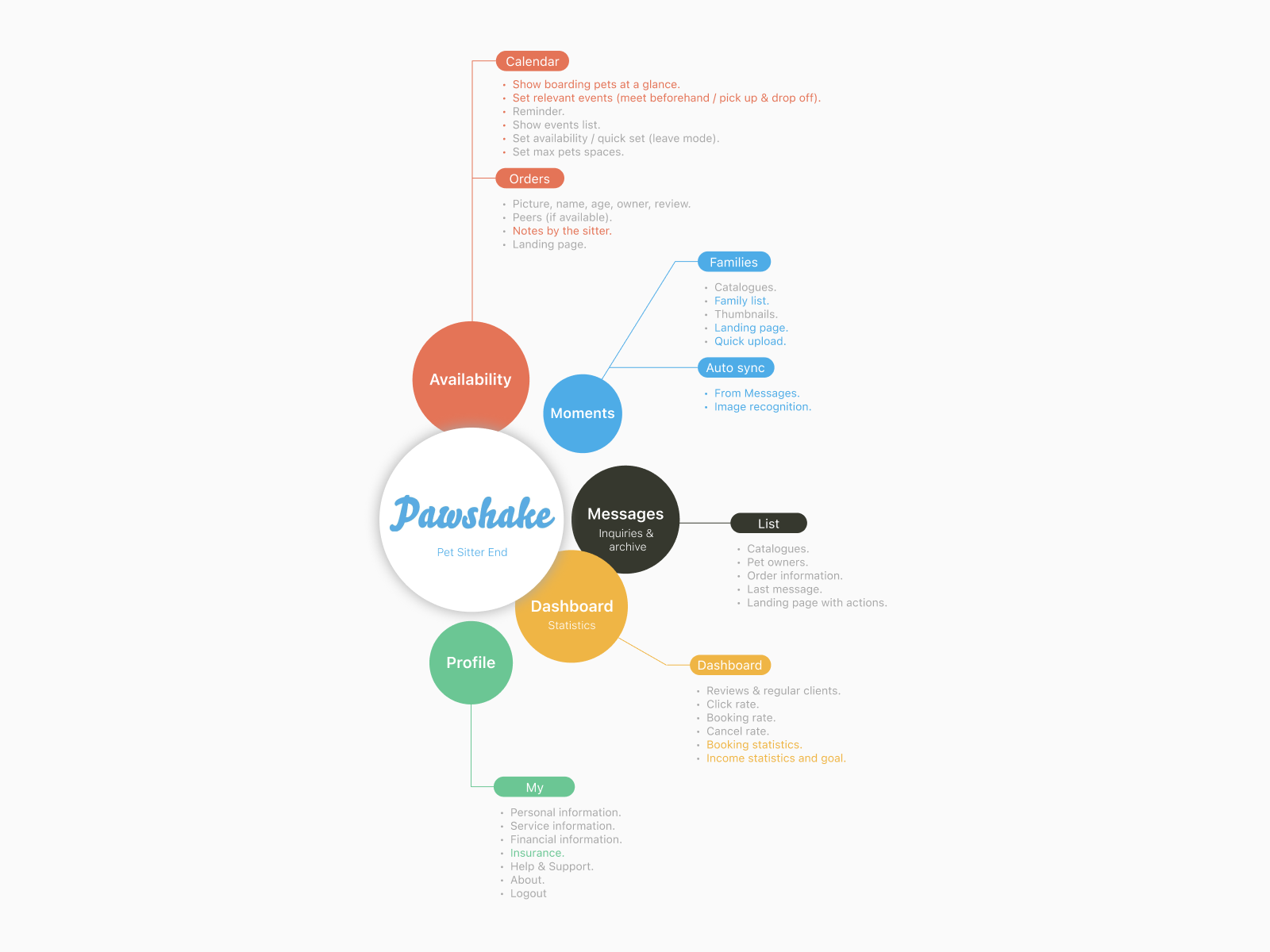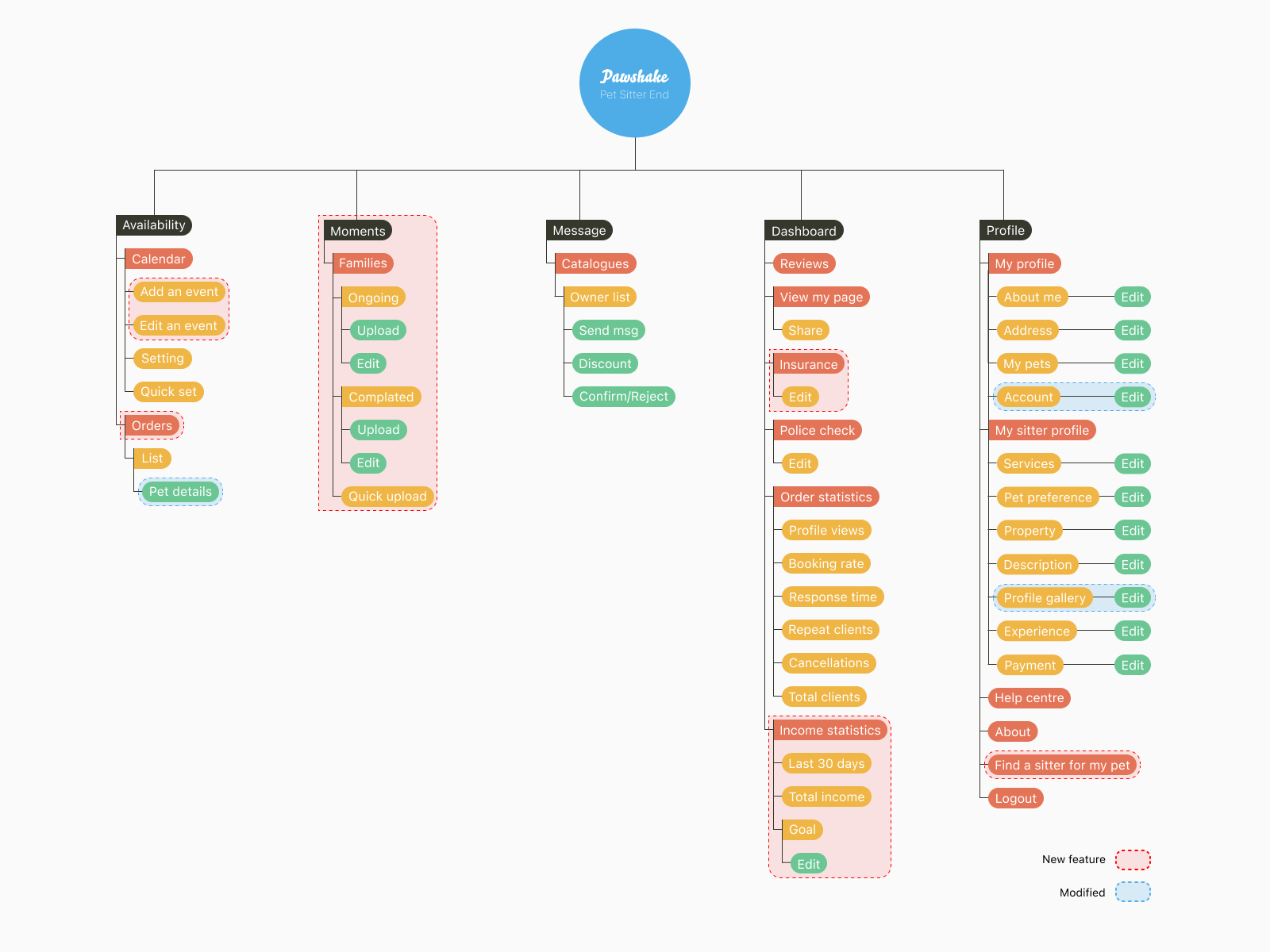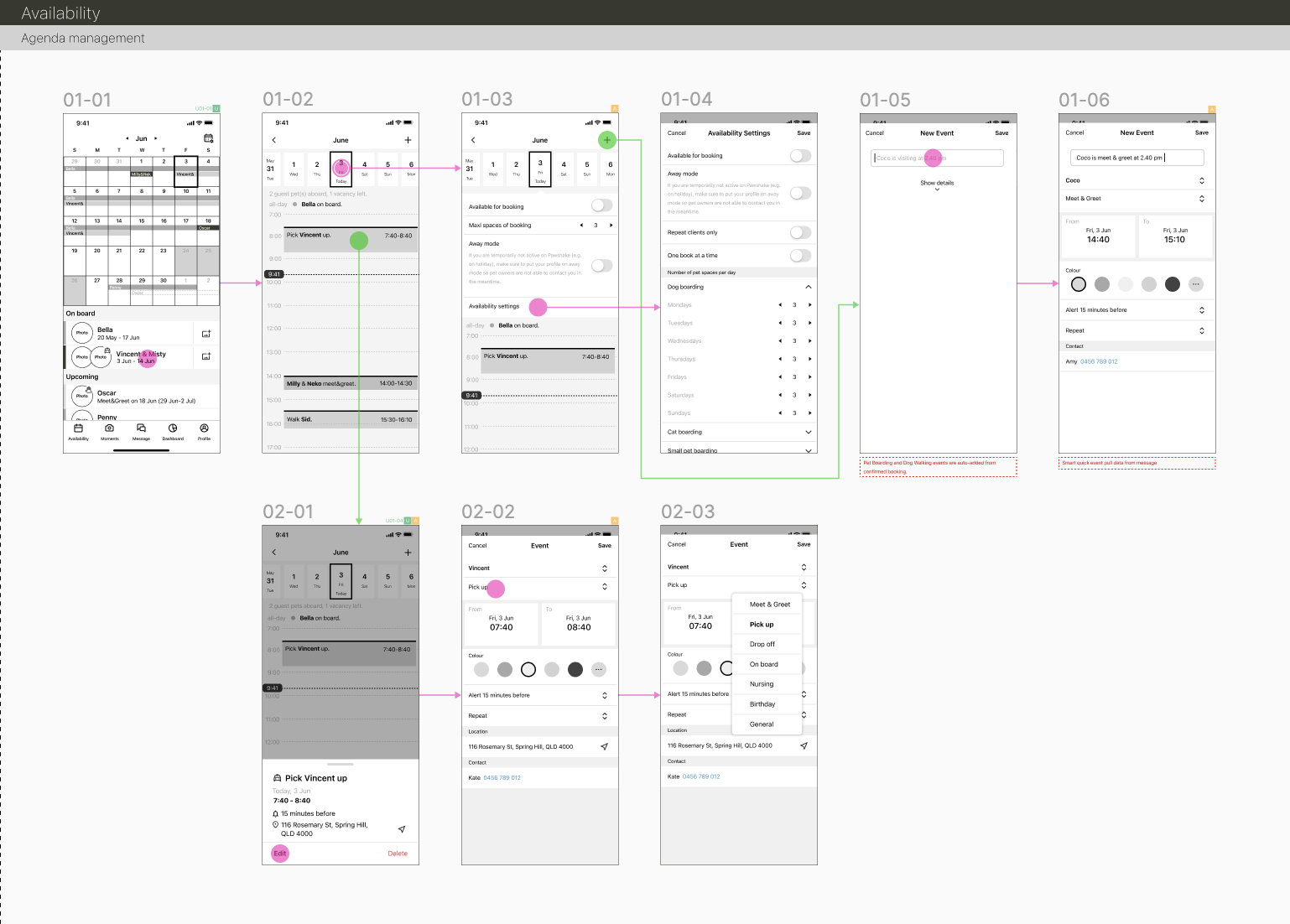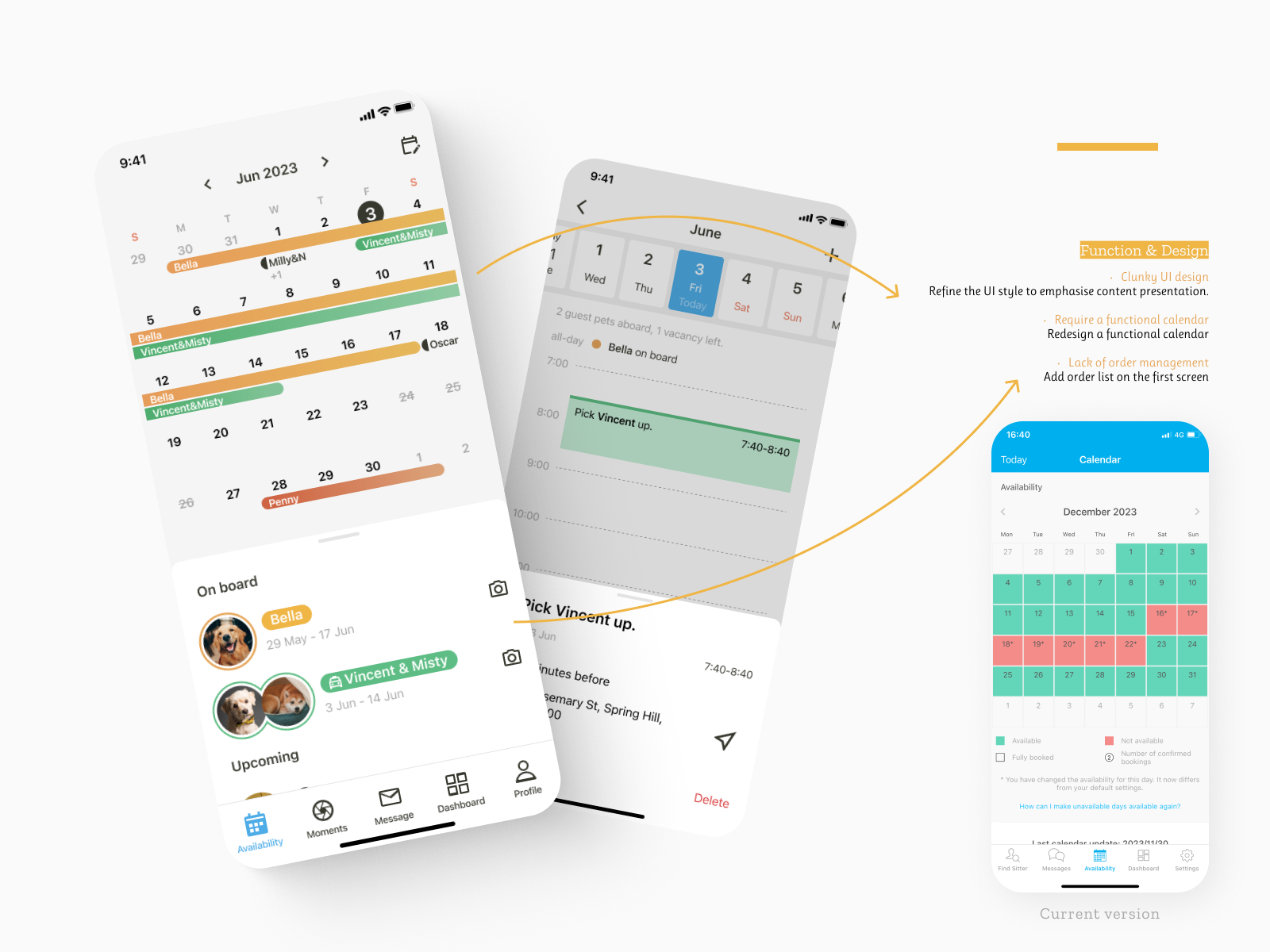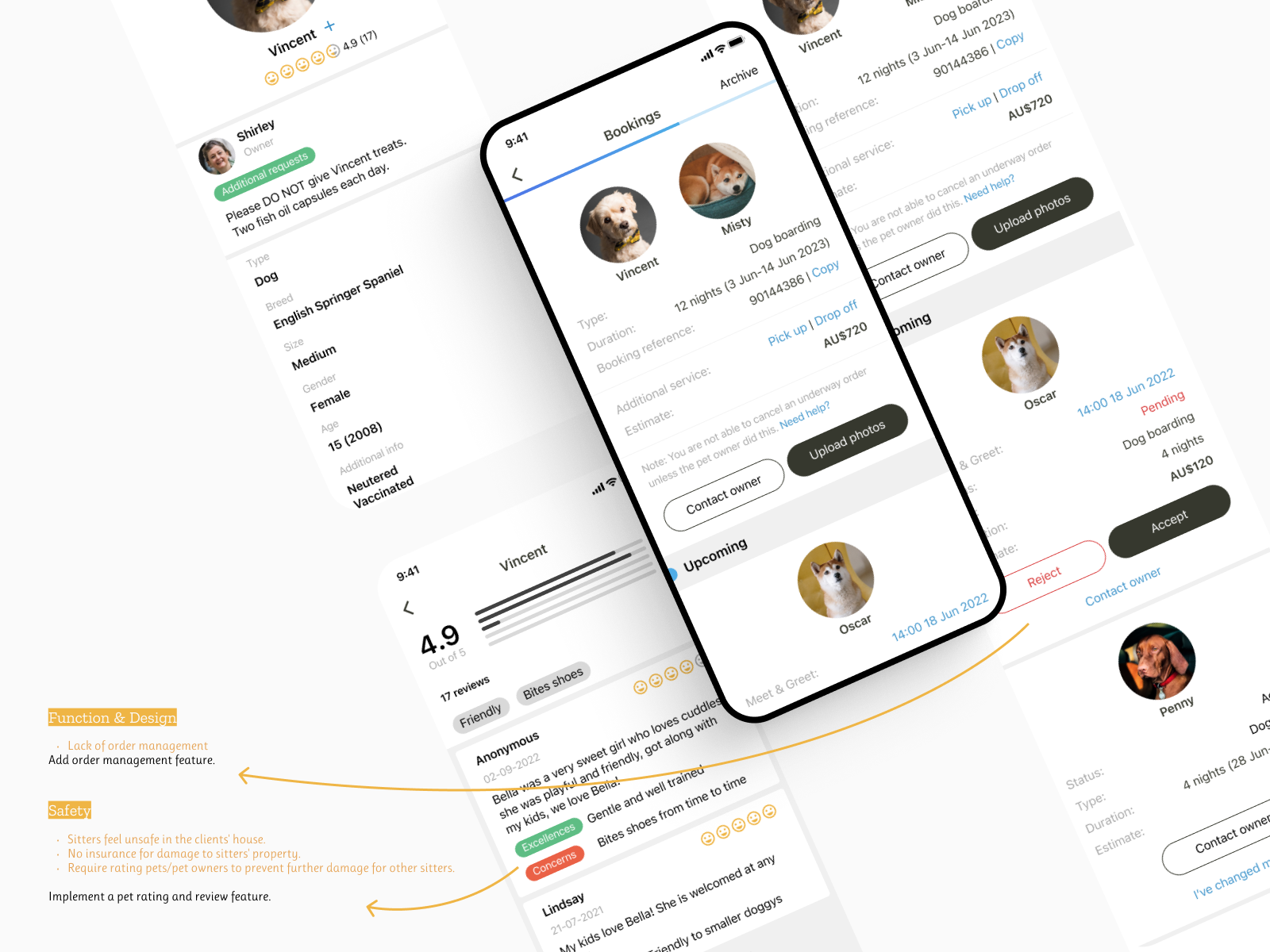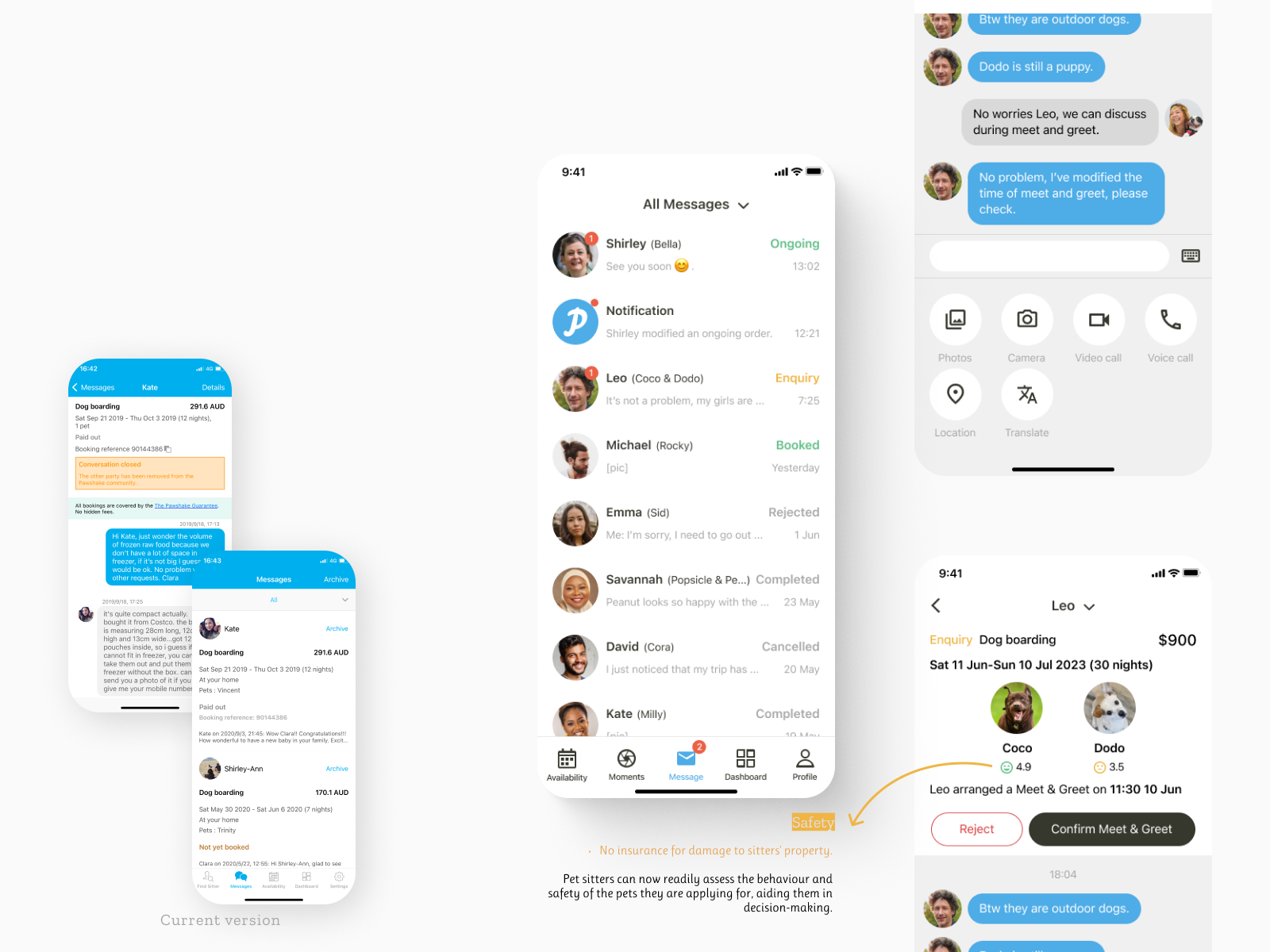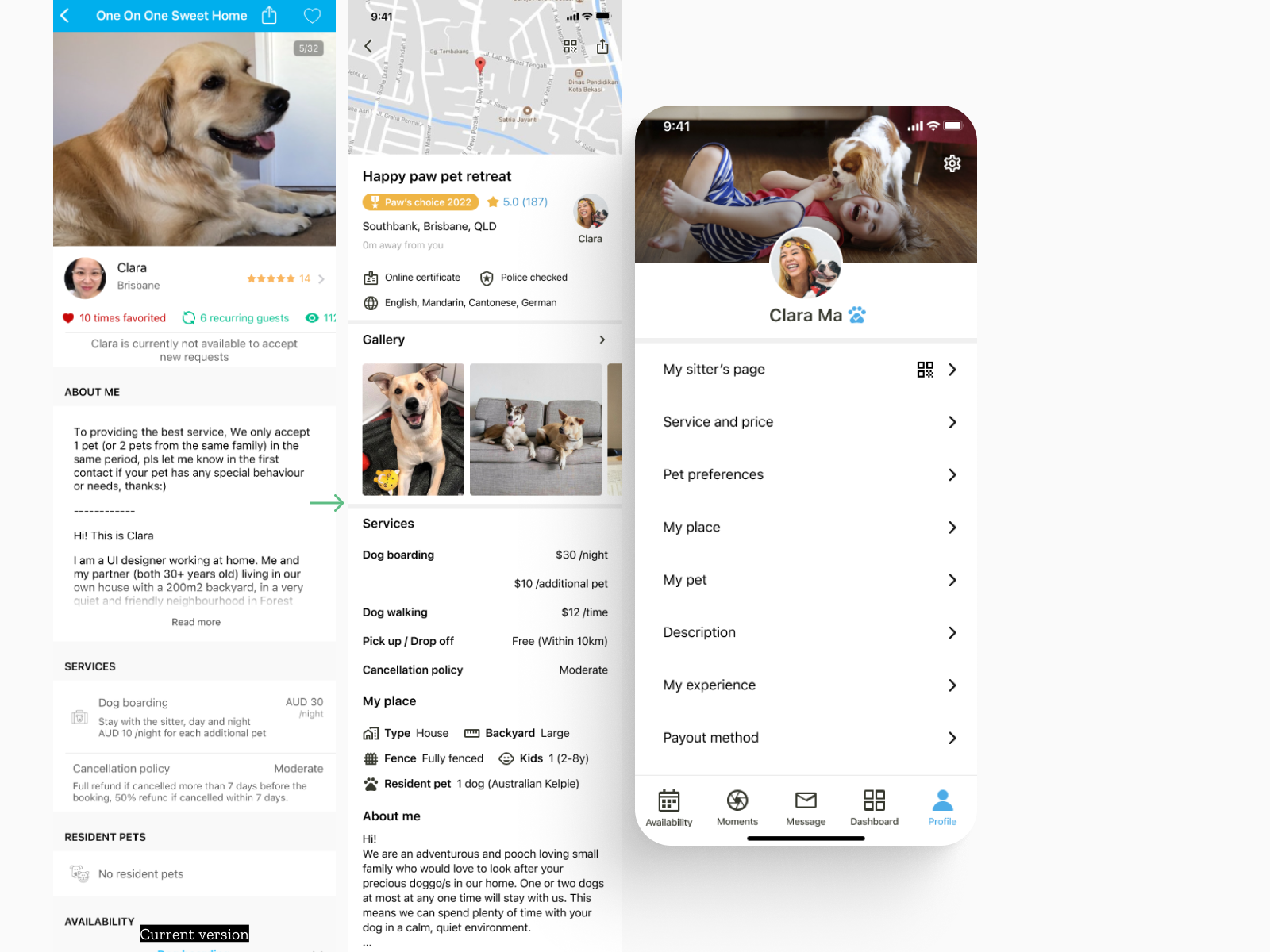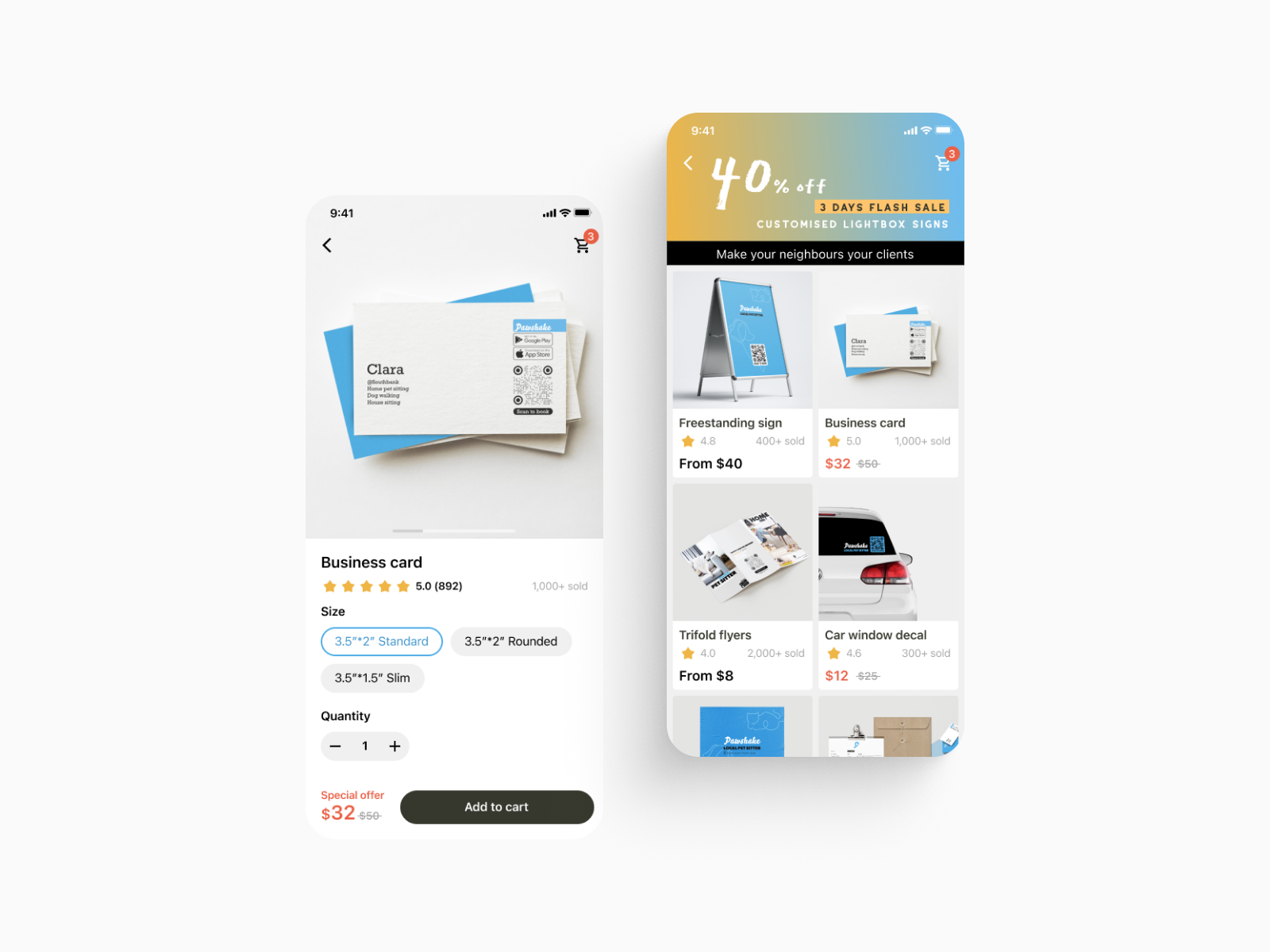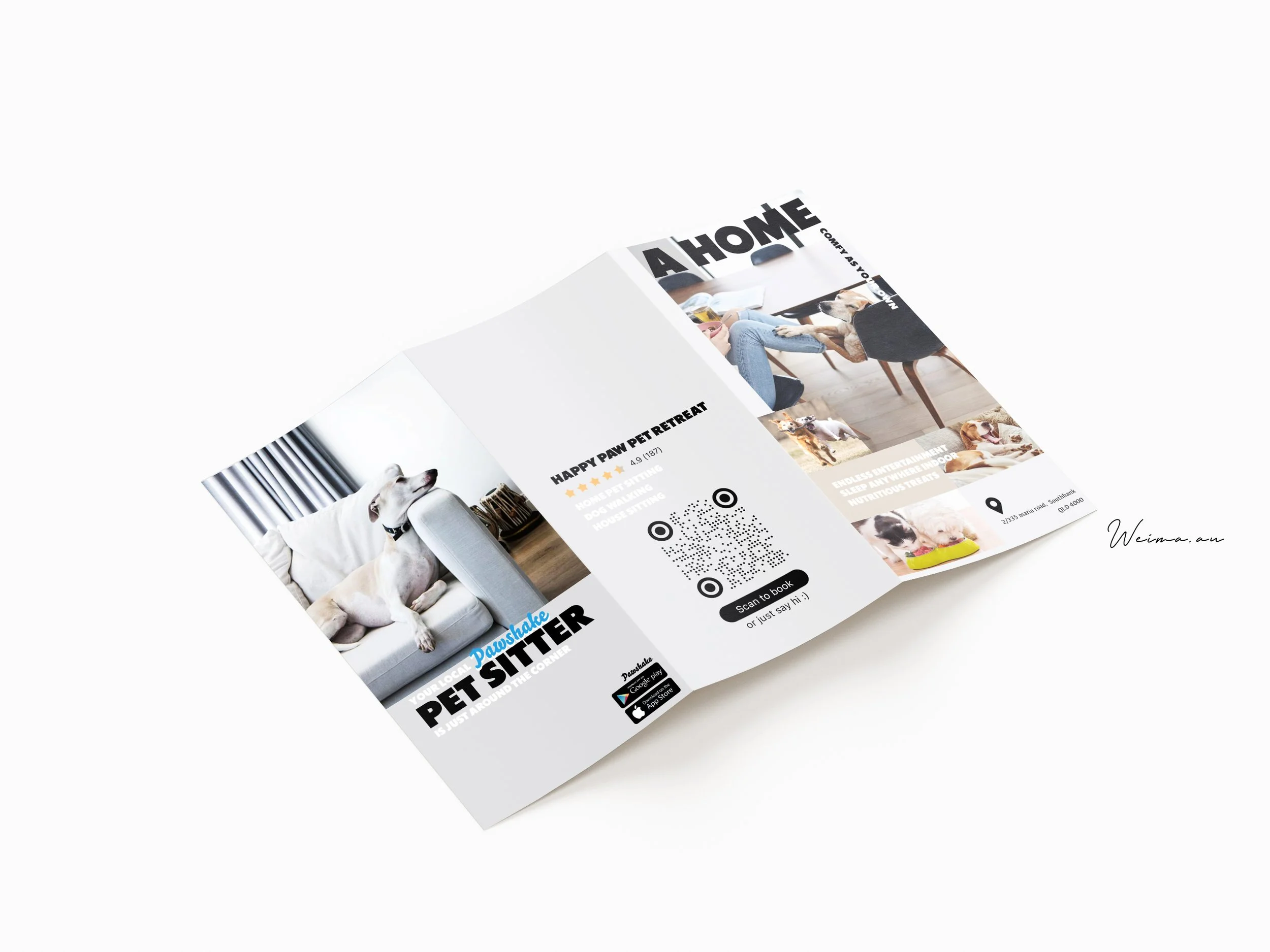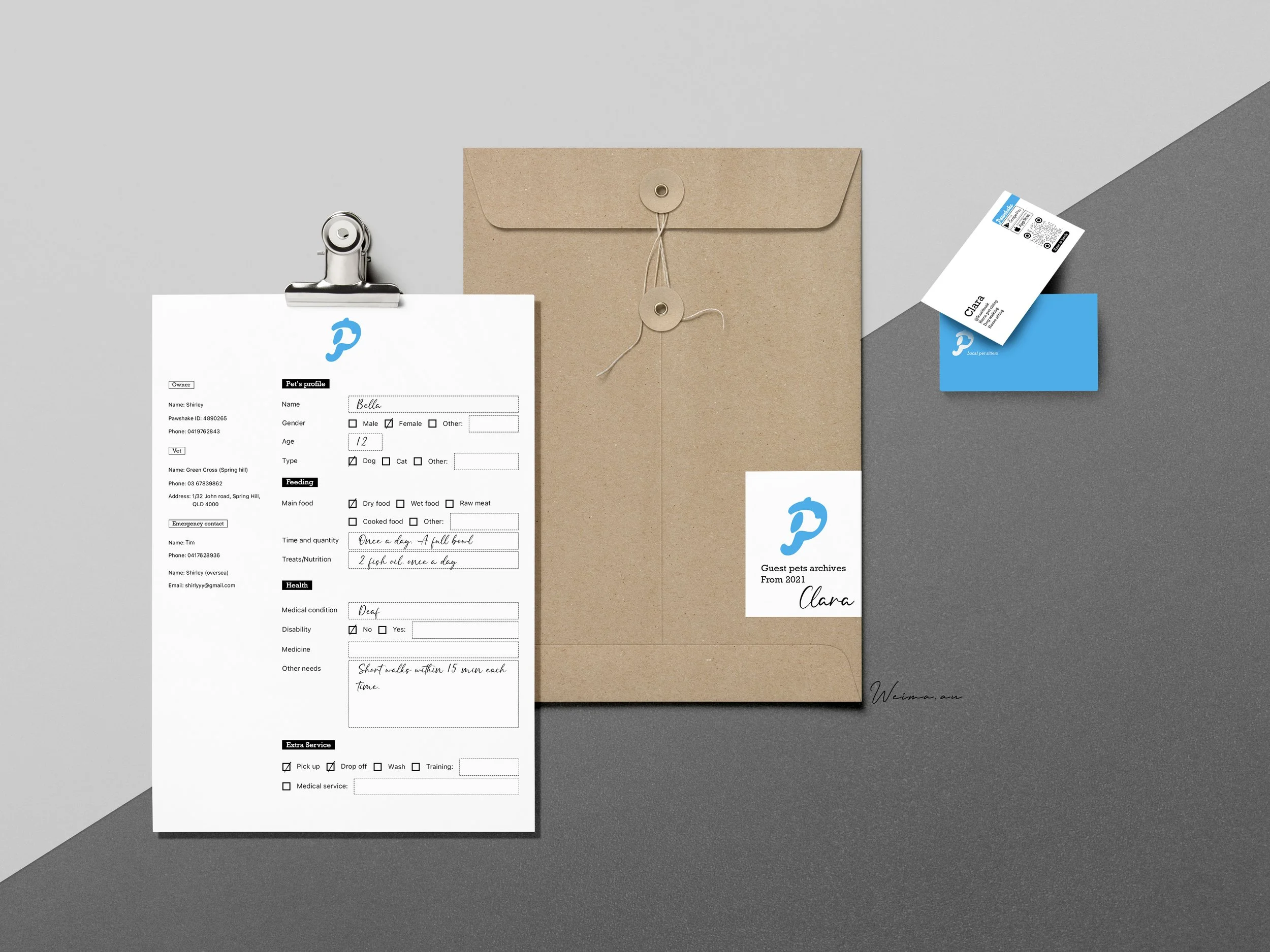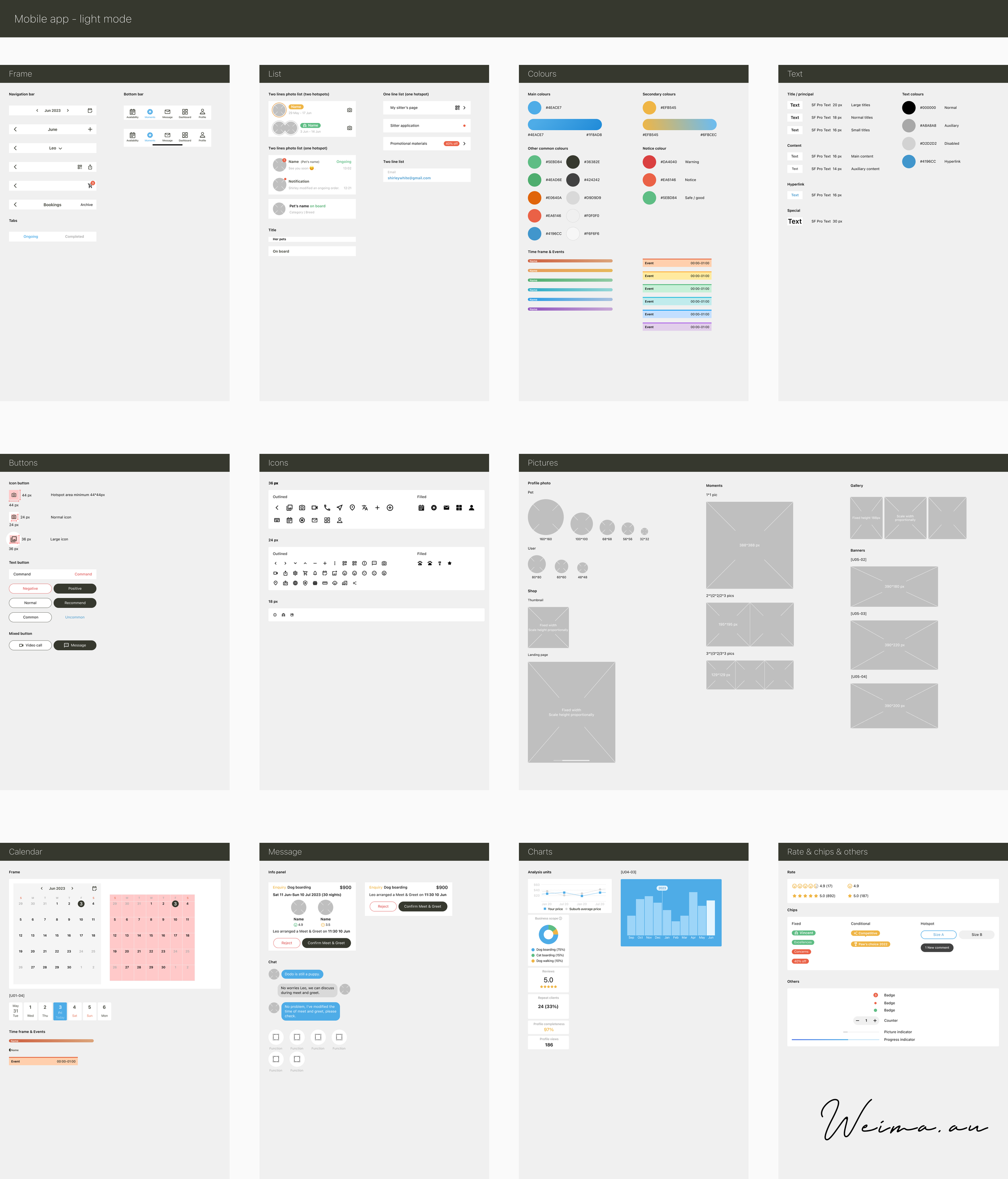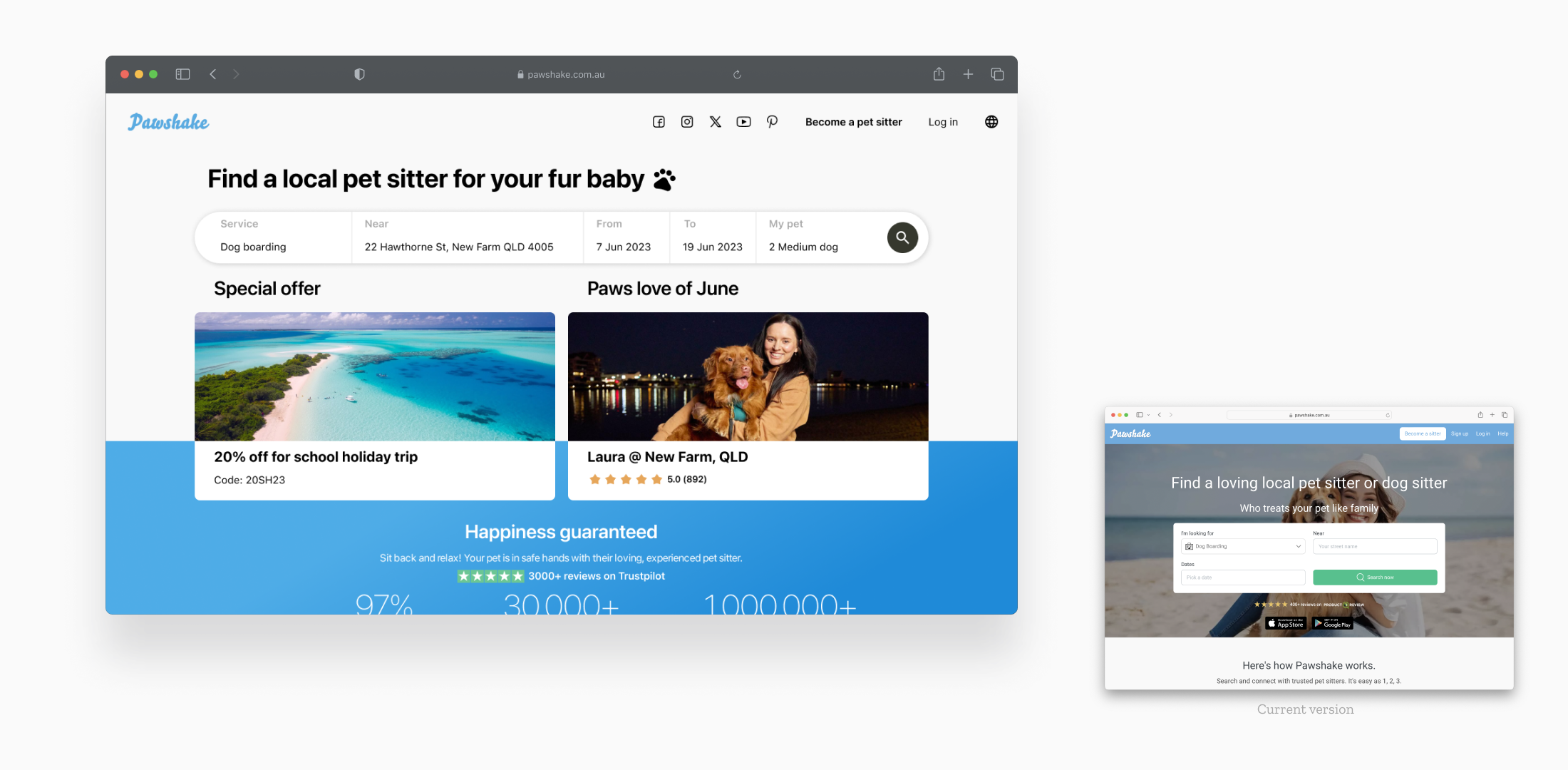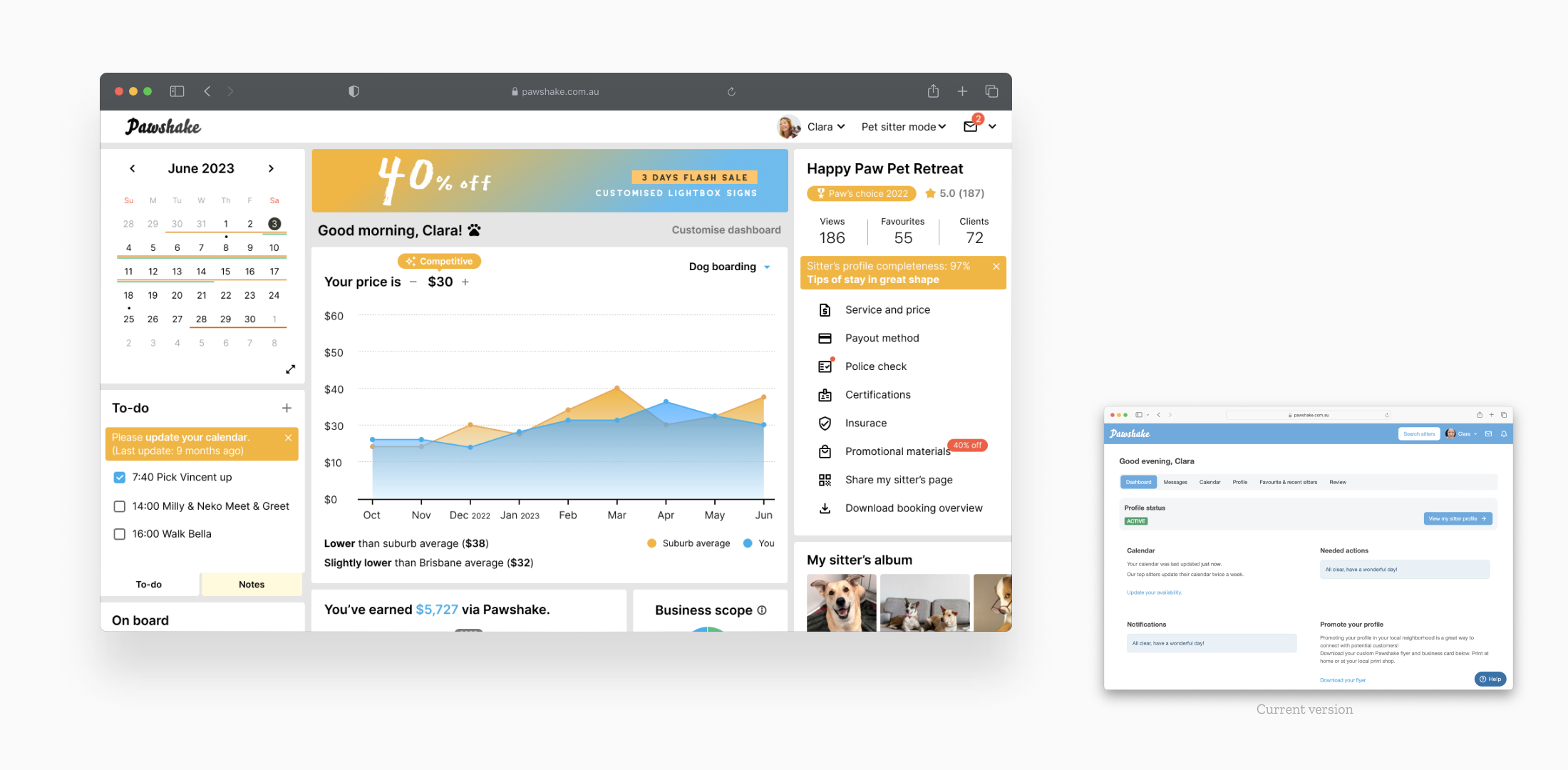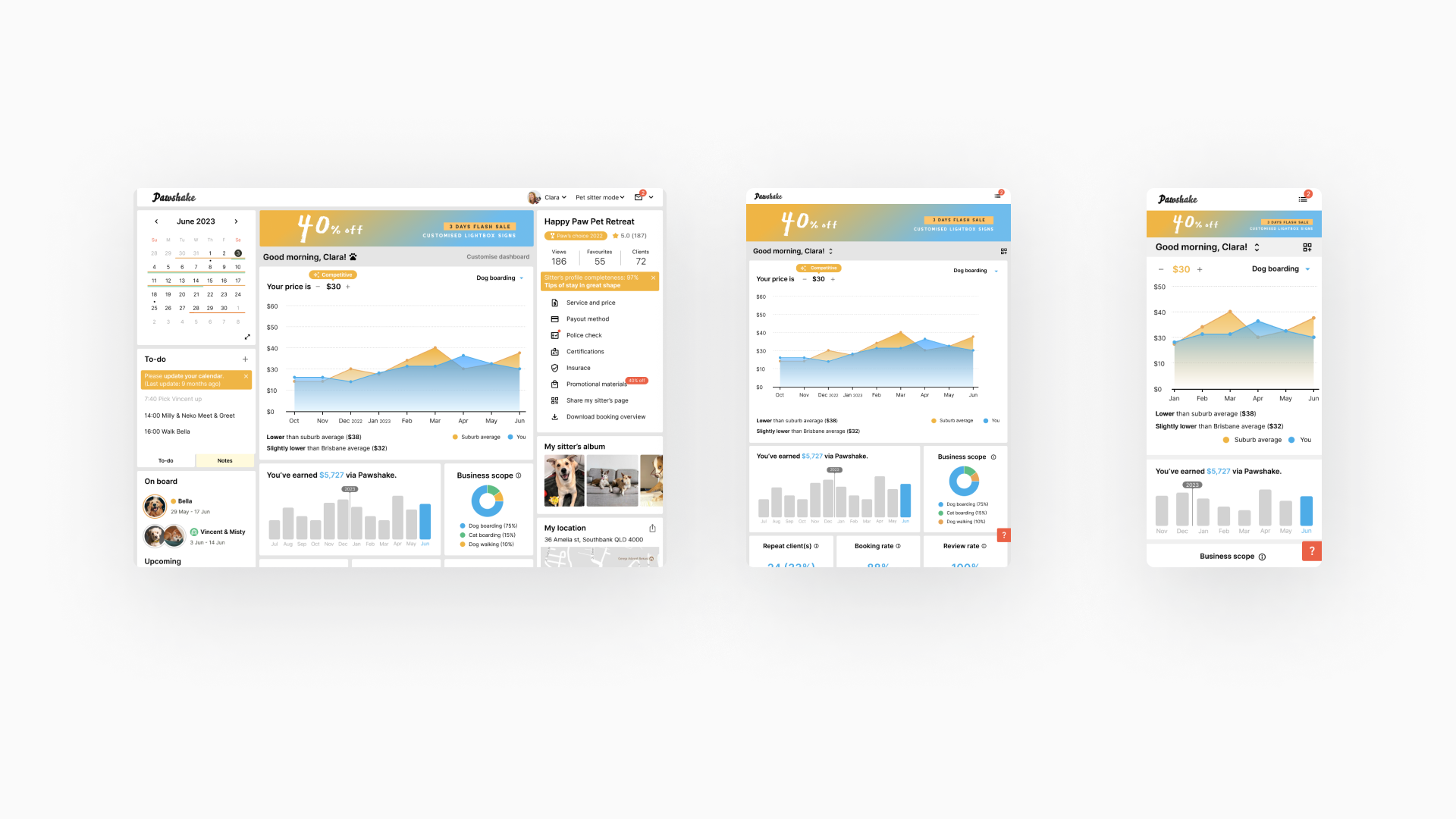Pawshake redesign
Pawshake, a pet-sitting service platform operating similarly to Airbnb, once dominated the Australian market. However, since 2017, it faced increased competition, resulting in a declining life cycle.
In response, I focused on identifying current pain points and making design strategies to facilitate its second growth.
2022 [ 2023 ] 2024
Understand the current status
Pawshake, once the top pet-sitting platform in Australia, slipped to the second position in later 2018. Despite the growing tendency of the pet-sitting industry.
Especially its strongest competitor, Mad Paws, is currently the most recognised pet-sitting platform in Australia. Mad Paws started exceeding Pawshake's market position around September 2018. By the end of 2023, Mad Paws' visibility had roughly doubled that of Pawshake's.
Competitor
Comparing the user experience of both apps from a pet sitter's perspective, Mad Paws has a sleeker UI design, while Pawshake is better in usability: functional design is intuitive, and background responsiveness is stable, leading to less frustration.
Persona
Qualitative data
Due to the nature of this product, conducting a usability test to gather quantitative data must based on REAL orders. However, as I don't have enough resources to grab a test version, I chose qualitative data as the baseline for this optimisation. I selected the three most efficient methods for gathering qualitative data:
User reviews
User interview
Expert review
Specify the current pain points
UX optimisation strategy
1. Enhance Pawshake's existing UX advantages by refining tasks and scenarios.
2. Address the experience points where competitors exceeded us, refining the design to supplement.
3. Address the sharing challenges of both products from a design perspective by enhancing security and improving efficiency.
4. Improve end-to-end service and promote product innovation to meet user needs.
To-dos and challenges
Design
Pawshake's primary product is the mobile app, and my design process begins here.
Information architecture
User Flow
Mobile app wireframe preview (partial)
High-fidelity prototype
Schedule management functions meet the actual needs of users.
New feature: order management
New module: Moment (photo/video sharing)
Introduce an independent media-sharing module.
Catering to diverse media sharing needs and enhancing the ease of browsing and managing photos & videos for both sides of users.
Pet owner’s profile
Data visualisation
The dashboard has been redesigned with data visualisation capabilities, now featuring a financial analysis module.
These features assist users in aligning their business strategies to meet financial objectives.
Messaging & enquiries
The layout of the message module has been slightly reorganised to enhance identification and communication efficiency.
Process before profile blocking
Pet sitters will receive push notifications & texts 48 hours before their profile is blocked due to delayed responses to clients’ messages. This allows users to understand their situation and take action to prevent their profile from being blocked.
Pet sitter’s profile
The personal page and sitter’s page have been refined to clarify categories and highlight key information.
A QR code has been added, to enhance the experience of offline promotion.
Physical promotional materials
Integrate a brand new module for ordering customised physical promotion materials to enhance pet sitters’ local visibility and boost product income.
UI kit
Customer service
Journey map
Service blueprint
Multi-platforms
The tablet app prioritises schedule management, the larger screen size is nice to accommodate complex scheduling details.
Website - guest mode
The first screen has been optimised to include some operational events to encourage pet owners to enhance their service quality.
Website - pet sitter mode
Since users typically spend a period on the computer, the website prioritises visual data analysis to assist users in making business improvement decisions.
Responsive
Thanks.















